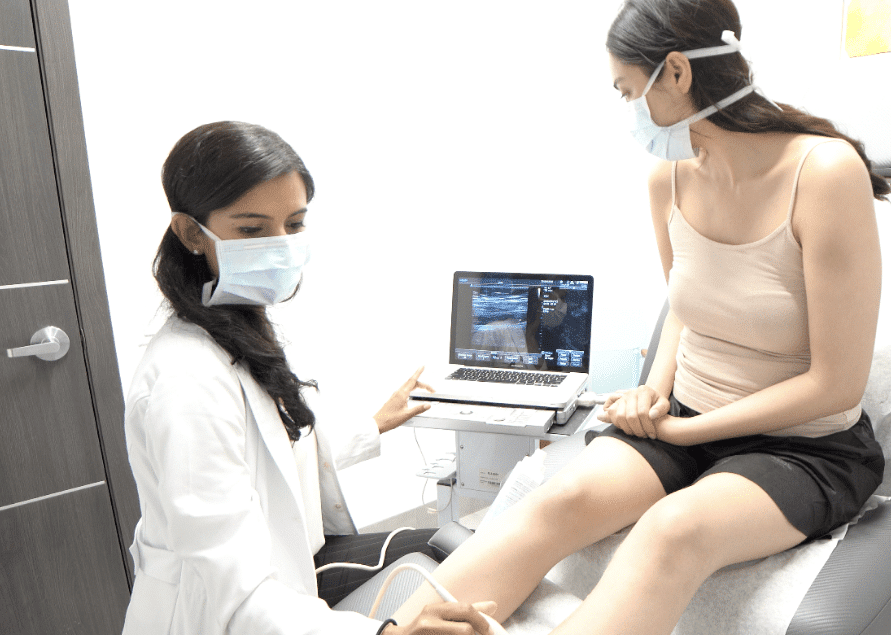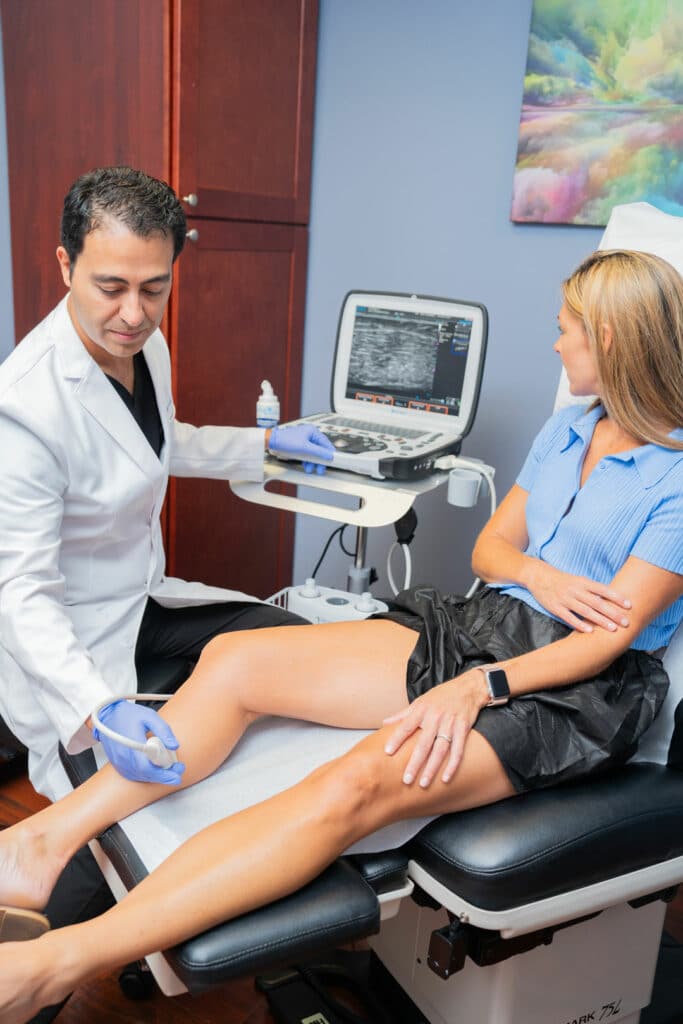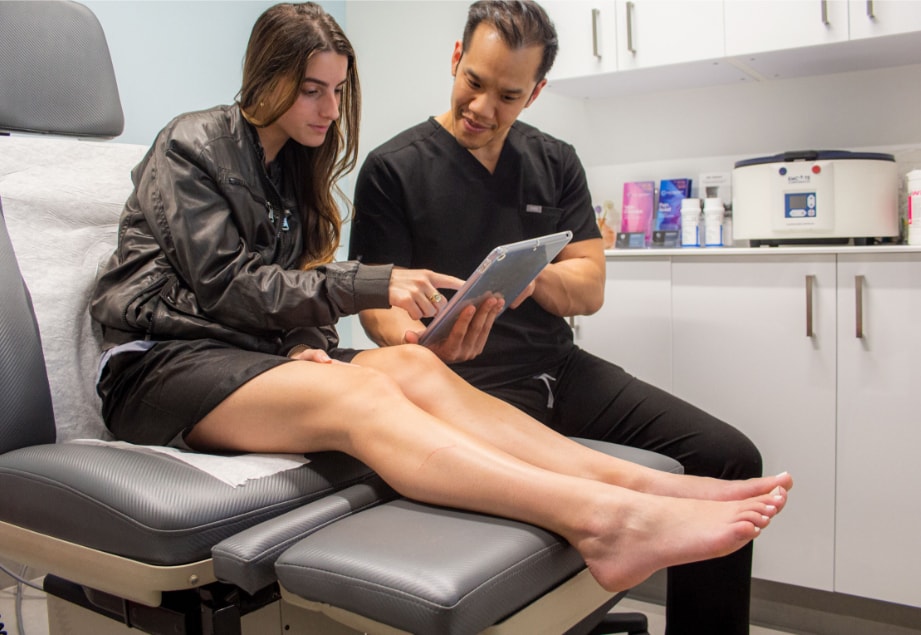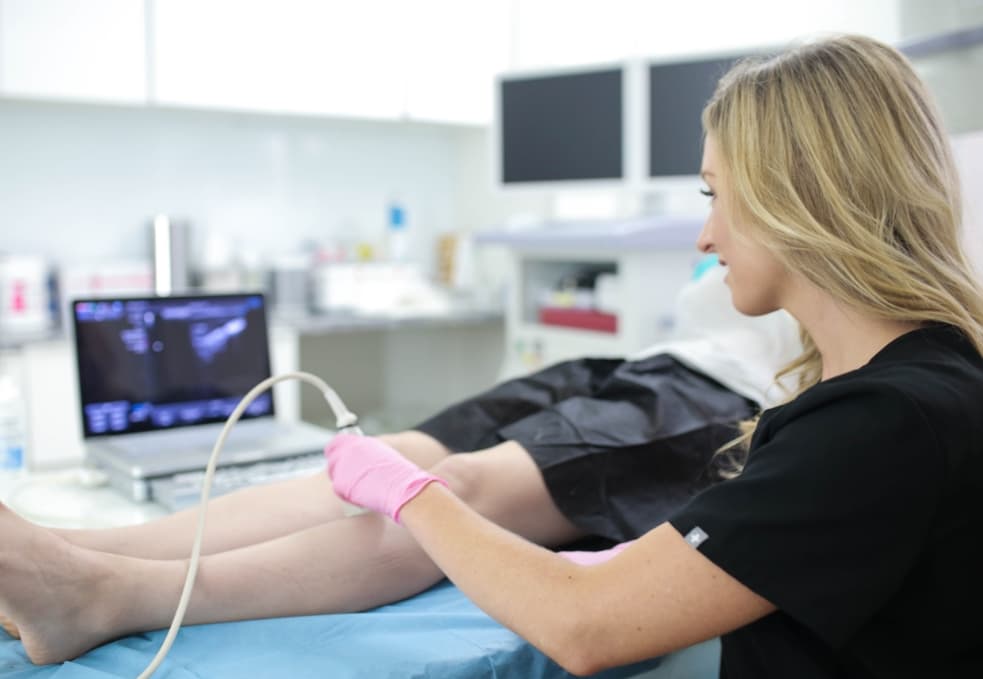What is the varicose vein ablation procedure?
Varicose veins are a common problem affecting up to 15% of adults. They are most common in women and usually occur on the legs. They can cause a number of symptoms, including pain, swelling, and cramping. In some cases, the veins can also lead to skin ulcers. And that doesn’t even begin to address the mental distress and emotional anxiety caused by bulging leg veins that protrude out of your skin’s surface in tangled and twisted knots.
The varicose vein ablation procedure is a minimally invasive procedure used to treat varicose veins and underlying chronic venous insufficiency, the root cause of most vein problems. The procedure involves using laser energy or thermal energy to heat and destroy the diseased vein responsible for the visible varicose veins. This results in the vein being closed off and the blood being redirected to healthy veins.
The varicose vein ablation procedure is a safe and effective way to treat varicose veins. The procedure is typically performed on an outpatient basis and takes less than an hour to complete. There is no need for general anesthesia or stitches. Varicose vein ablation is a minimally invasive procedure that allows you to avoid varicose vein surgery — there’s no hospitalization or downtime. You can even squeeze it into your lunch break!
Maryland Vein Center is a state-of-the-art vein center specializing in the latest and safest minimally invasive vein treatments, including vein ablation. Our vein doctors carefully diagnose the root cause of your vein problems and curate a personalized, minimally invasive vein treatment plan that improves your symptoms. You can find our vein center in Bethesda, Maryland, a short drive from Washington, DC. Please schedule an appointment to explore your vein ablation options.

What are the types of varicose vein ablation?
There are two types of varicose vein ablation: radiofrequency ablation and laser ablation. Both vein ablation procedures have the same goal — destroy the diseased saphenous vein responsible for the vein problems to reroute the accumulated blood into healthier leg veins. But they approach that goal using different techniques. Both procedures are extremely effective and have a nearly perfect success rate, so your vein doctor will select the ideal procedure based on your specific needs and condition.
Radiofrequency Ablation
Radiofrequency ablation is a minimally invasive procedure that uses heat or thermal energy to collapse the diseased vein. A small probe is inserted into the vein, and radiofrequency energy is delivered to the vein wall, causing it to heat up and collapse.
Endovenous Laser Ablation
Laser ablation is a minimally invasive procedure that uses laser energy to destroy the diseased vein. A small probe with a laser fiber is driven into the vein, and laser energy is delivered to the vein wall, causing it to heat up, shrink, and collapse.
How does varicose vein ablation work?
To understand how vein ablation works, you must understand what causes varicose veins.
Chronic venous insufficiency is the root cause of varicose veins and most other vein problems. Venous insufficiency is a medical condition wherein the collapse of vein valves leads to backward blood circulation due to gravity and the eventual accumulation of blood in leg veins. As blood continues accumulating in the leg veins, you may suffer from vascular dilation and the eventual formation of spider veins and bulging varicose veins.
Vein ablation is one of the most effective varicose vein treatments because it targets the root cause of your vein problems — not just the superficial symptoms. The vein doctor uses thermal or laser energy to destroy the diseased saphenous vein responsible for your vein problems. Once the diseased vein collapses, the accumulated blood reroutes into healthier leg veins, restoring effective blood circulation to the heart. The varicose veins gradually fade away.
What are the signs and symptoms indicating I need varicose vein ablation?
There are several signs that you may need varicose vein ablation. If you have pain in your legs, especially when walking or standing, this may be a sign that you need treatment. If you have skin changes, such as ulcers or rashes, near your varicose veins, this may also be a sign that you need ablation. Your vein doctor will likely do an examination and may order some tests, such as an ultrasound, to make the decision.
What are the benefits of varicose vein ablation?
There are several benefits of varicose vein ablation. One is that it is a minimally invasive procedure. This means that it does not require any incisions or stitches, and there is no need for general anesthesia. The procedure is also relatively quick, taking only about 30 minutes to an hour to complete.
Another benefit of varicose vein ablation is that it is effective. In most cases, the veins will be completely destroyed and will not return. This is a much more effective treatment than other options, such as sclerotherapy, which can only target spider veins and small varicose veins — not underlying vein disease.
Finally, varicose vein ablation is a safe procedure. There are very few risks and complications associated with it. The most common side effect is bruising and swelling, but this usually goes away within a few days.
How long does vein ablation take?
Vein ablation is usually performed as an outpatient procedure, which means you can go home the same day. The procedure takes about 30 minutes to an hour to complete.
What are the side effects of vein ablation?
Vein ablation is generally a safe and effective procedure. However, as with any medical procedure, there are potential risks and side effects. These include:
- Bleeding
- Bruising
- Infection
- Pain
- Swelling
- Thrombophlebitis (inflammation of a vein)
What is the radiofrequency ablation varicose veins recovery time?
The radiofrequency ablation varicose veins recovery time is usually very short. Most people can return to their normal activities immediately. There is no need for a hospital stay. You may have some bruising and swelling around the treatment area, but this should resolve within a few days.





